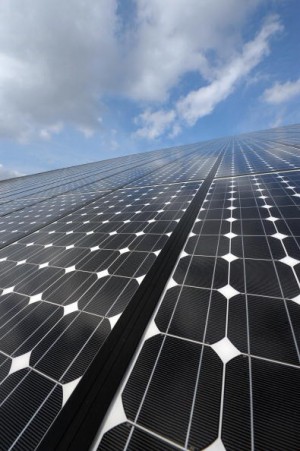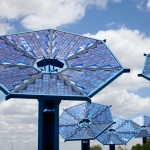Why So Few Solar Farms in Texas?
The Obama administration announced last week that 445 square miles of the West — more than 285,000 acres — will be zoned for solar energy development. Across parts of Arizona, California, Colorado, Nevada, New Mexico and Utah, the government is essentially fast-tracking large tracts of land managed by the Bureau of Land Management (BLM) for solar energy development. The BLM has done the research and surveys, now companies can start applying for permits to build solar energy farms. It can shave one to two years off the approval process. The areas are called Solar Energy Zones (SEZs), and they represent an important step forward in the development of solar energy.
But Texas wasn’t on the list. Why? I put the question to Megan Stouffer, the State Planning and Environmental Coordinator for BLM New Mexico, which manages agency projects in that state as well as Texas, Oklahoma and Kansas.
“Texas likes to be separate,” she says.
For starters, there is almost no BLM land in Texas. Aside from the somewhat random holdings of a ranch and helium plant, there is a negligble amount of available acreage here compared to other western states. “If someone wanted to put something in Texas, we’d have nothing to do with it,” Stouffer says.
The lands BLM and the Department of Energy picked for solar development had to have a lot of surface area and high solar activity. As you can see from the map below, there are large swaths of land in West Texas and the panhandle that have plenty of potential for solar development:
While Texas has plenty of solar activity, it’s the land part of the equation keeping the state out of large-scale solar development. “Most of the land in Texas already accounted for by land grants,” Stouffer says, “or it was already private land at the time when BLM was created. So when we permit in Texas, we have to work with whomever owns the land.”
With so much of Texas land split up into parcels, there’s very little contiguous ownership, which means a lot of red tape and negotiating in order to get permission to develop. “It’d have to be an individual with an enormously big ranch,” says Stouffer.
There are a few solar projects operating, and some others in development, in Texas, but nothing like what you’d find in California and soon in much of the rest of the west. If Texas is going to catch up with the rest of the country’s in the solar world, it will likely be without any participation by the federal government.


